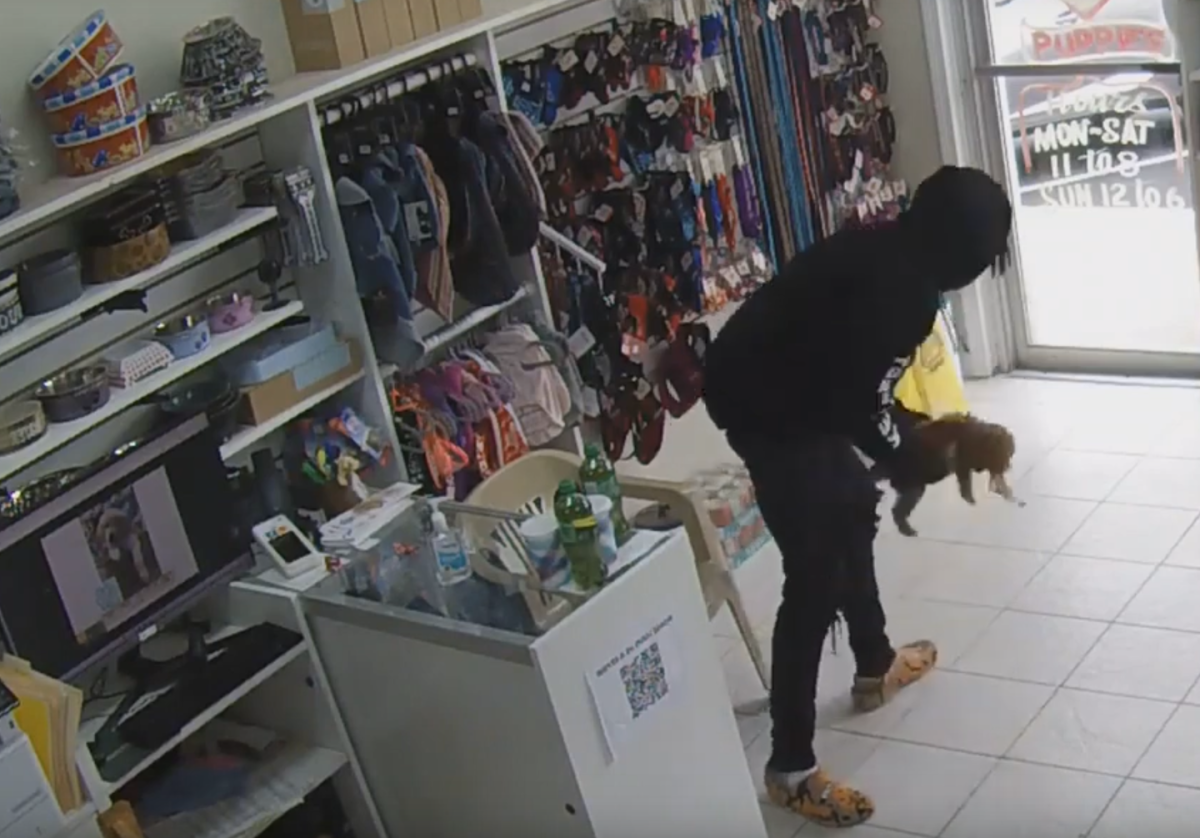It’s late at night and a stranger walking down an alley sees your family dog sleeping on the porch in your fenced yard. The stranger calls the dog softly and begins to pet it. While he checks to see if anyone is watching, he opens the gate, attaches a leash to your dog’s collar and leads him away, never to be seen again. The next morning your family is distraught; When a neighbor’s video surveillance reveals that your dog has been stolen, you feel deeply violated.
While the emotions described are implicit, the circumstances are not: Reports indicate that dog thefts are on the rise in the US.
Losing a pet can have devastating consequences, and it is a crime that has consequences far beyond the animal’s financial value. Many dog owners consider their dogs as members of their family; A 2020 study found that losing a pet can have a similar emotional impact as losing a loved one.
As criminologists, we wanted to better understand dognapping and dognappers, while also pointing out some ways pet owners can keep their four-legged friends out of harm’s way.
Working with criminal justice researcher J. Mitchell Miller, we studied 82 incidents of dog thefts captured by surveillance cameras and posted online.
Breaking down the images
In the videos we analyzed, about half of the thefts appeared to involve one perpetrator operating alone. Approximately 38% involved two perpetrators, while 9% involved three or more people.
The thefts generally appeared to involve some planning and strategy. In our sample, nearly 38% of thieves used vehicles to transport the stolen pets, about 3% used bicycles, and 50% fled on foot. Three incidents involved violence – such as pushing the owner – and approximately 15% of the thefts involved some form of violence, such as burglary of a building. In about 37% of cases, the thieves managed to hide the animal with bags, clothing or other methods.
Thieves sometimes used distraction techniques. In one case, two thieves distracted a pet store employee while the other grabbed a puppy from an exhibition kennel near the front door.
The vast majority of incidents – 74% – involved the theft of a single animal, and these were usually small dogs. According to the American Kennel Club, certain breeds, such as French bulldogs and Yorkshire terriers, are more attractive targets; they are relatively small and usually sell for higher prices than other breeds.
Interestingly, only a handful of dogs bit or barked as they were being led away. More than half seemed calm during the incident, while about 33% behaved friendly towards the thieves.
About 68% of thefts occurred during the day and 60% occurred indoors; those that took place indoors usually happened in pet stores, rather than in people’s homes. When the dognappings took place outdoors, the dogs were usually snatched from people’s front yards, where the pets were visible from the street.
Punishment that does not fit the crime
There are several reasons why someone might steal a dog. Some people do it simply to make a quick buck – a practice known as pet flipping – or to demand a ransom from the owner.
Others have grand visions and focus on highly prized pure breeds, such as rottweilers and chow-chows, to start a breeding operation. Then there are people who steal pets for dog fighting, while some thieves just want a dog for themselves and don’t want to pay for it or go through the adoption process.
Recent reports indicate that pet theft is on the rise. One clear indicator is an increase in social media posts about lost or stolen pets.
The COVID-19 pandemic has exacerbated this trend: demand for pets exploded during the lockdowns, and prices for dogs on the secondary market soared.
Complicating matters further is a justice system that, in our view, often fails to adequately address the seriousness of this crime. In many jurisdictions, pet theft is treated the same as property theft. As a result, many pets – even some purebreds – can be valued at less than $1,000, usually resulting in relatively mild penalties.
A thief who enters your property and steals your dog and sells it to someone else will likely receive the same punishment as someone who took your bicycle.
Needless to say, viewing and appreciating a dog is no different than any other possession, ignoring the deep emotional bond between pets and their owners.
Defensive measures
There are some preventative steps that dog owners and pet store owners can take.
Many thefts occurred in places where pets were easily accessible and visible to passers-by, such as in front yards or at the exit of pet stores. Something as simple as a higher fence could better protect dogs. Microchipping pets and using GPS collars can make stolen pets easier to find and less attractive to thieves.
Of course, stricter laws and harsher penalties for pet theft could further deter criminals. While there is no database on the number of pets stolen, every pet kept safe means one less devastating loss for a family.
This article is republished from The Conversation, an independent nonprofit organization providing facts and trusted analysis to help you understand our complex world. It was written by: Ben Stickle, Middle Tennessee State University and Brenda Vose, University of North Florida
Read more:
The authors do not work for, consult with, own shares in, or receive funding from any company or organization that would benefit from this article, and have disclosed no relevant affiliations beyond their academic appointment.

